Growing Lavender In Pots is not as difficult as the other herbs when you know about the basic requirements! Read on to know them in detail!
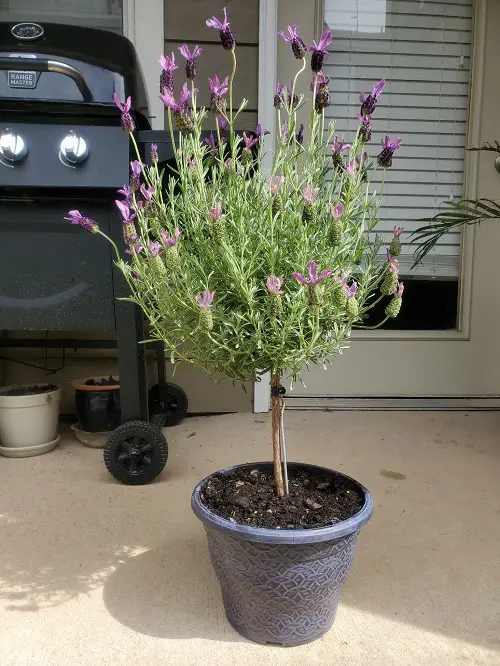

Lavender is a perennial herb, with a distinctive sweet fragrance, making it a popular ornamental indoor houseplant! What’s more, you don’t need to have a huge space to grow this fragrant herb! Growing Lavenders in Pots is simple, so let’s dive deeper into it!
Botanical Name: Lavandula angustifolia
USDA Zones: 5 to 9
Soil pH: 6.7 – 7.3
Check out our article on growing Lavender in tropics here!
Propagating Lavender
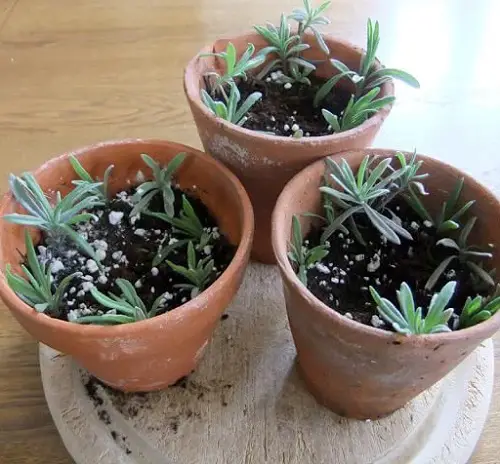
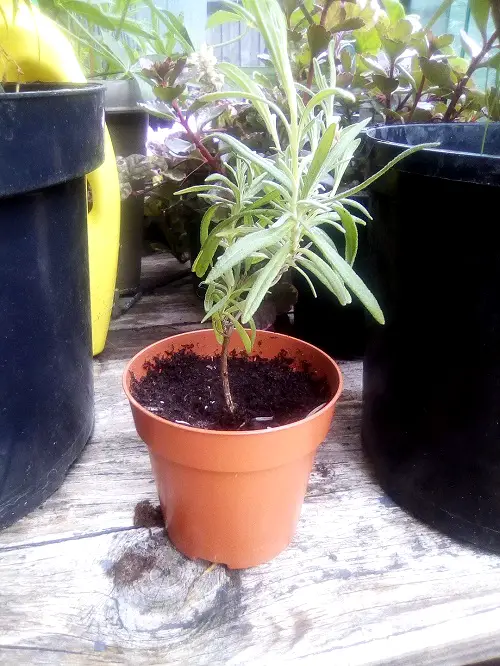

From Seeds
The seeds of the Lavender plant are small and delicate. Sprinkle the seeds on a seed tray with a light soil mix, preferably fine vermiculite, as it drains quickly. Cover the seeds lightly with a layer of perlite. Once you have planted the seeds, make sure that you are keeping them at a bright and airy location that gets plenty of indirect sunlight (exposure to soft morning sun is fine). They will sprout in about 14-20 days.
From Cuttings
Lavender grows quite easily from cuttings. Make sure that you are taking them from a healthy plant. Take out cuttings, measuring 3-4 inches long, right below the node, where the set of leaves join the stem of the plant. Once cut, take out all the leaves from the bottom 2 inches and dip them in a rooting hormone. Then, plant directly in a lightly moist, and sandy soil.
Here’s everything you need to know about growing Lavender!
Lavender Varieties to Grow in Pots
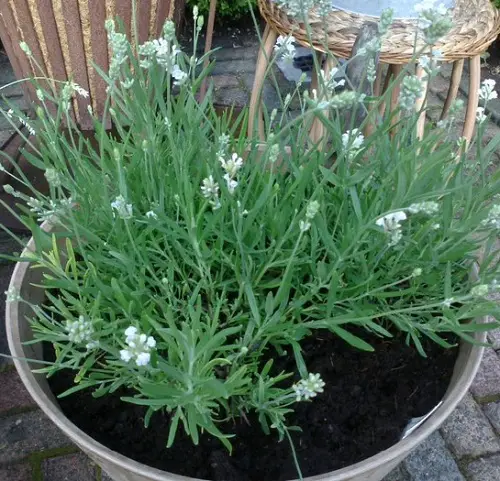
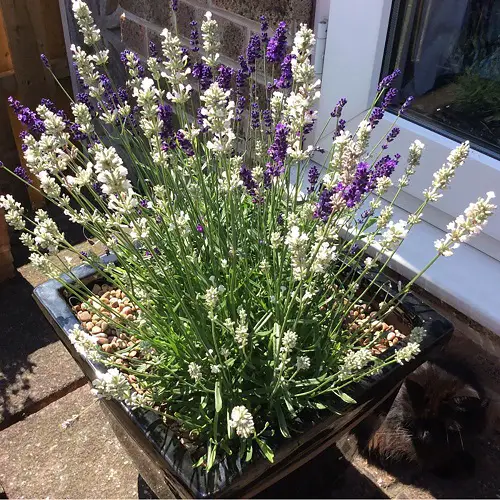
1. Thumbelina Leigh
Thumbelina Leigh is a compact, robust dwarf, that grows to a height of about 10-18 inches. It has two-tone flowers, with a strong fragrance, making it a top choice for many gardeners! Having short spikes, it’s a great choice when it comes to growing lavender in containers!
2. Munstead
Munstead grows in a bushy mound, up to 24-30 inches. Quite famous for its long-lasting and delightful odor, it is a must-have variety with beautiful foliage that looks best when kept in pots. It flowers most of the time in a year, making it the top choice when growing lavender in pots.
3. Hidcote
Hidcote is a compact bushy lavender variety. It grows about 12 to 20 inches tall with an unmistakable scent and a dark-purple shade of flowering spikes. The plant has beautiful foliage, with dark blue flowers.
4. Nana Alba
Nana Alba is a floriferous dwarf lavender, having silvery-green foliage. It grows in a compact, bushy dome, and grows to about 12-16 inches in height. It has beautiful, bright white flowers, that contrast stunningly with its aromatic foliage!
5. Lavenite Petite
This Lavender variety is distinctive, thanks to its attractive, violet flowers, with a strong fragrance. It grows in a compact form, measuring 12 to 18 inches in height and has short stems and tight foliage.
6. Rosea
Rosea is a bunch lavender variety, growing to a maximum of 24 to 30 inches in height. It has strong-smelling, pink flowers on silver-grey foliage, that adds up to its charm!
Choosing a Container
It depends on the lavender variety you’re growing. But unlike other herbs starting with a medium-sized container is always a good idea with Lavenders, as they tend to grow to the size that resembles a small shrub. A 10-12 inches deep container is great for this purpose.
Growing Lavender Indoors

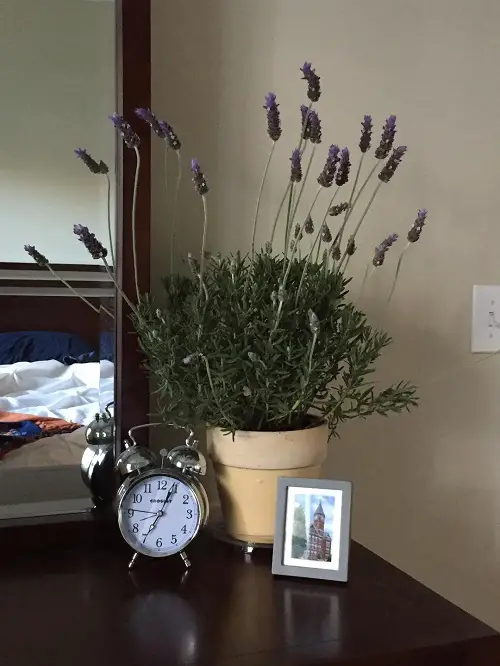
Growing lavender indoors is easy as long as you have a direct source of sunlight. Keep it in a balcony or near a South or West facing window, makes it thrive in no time! For an indoor lavender plant, water it only when the topsoil dries out.
Requirements for Growing Lavender in Pots


Location
Lavenders need a lot of sunlight to grow well, requiring at least 6 hours of direct sunlight daily. The more sunlight the plant will receive, the better it is for its growth. You can also use a bright mulching material to reflect sunlight onto the plant.
Soil Preparation
Lavender loves neutral to slightly alkaline soil with little organic matter. It also needs to be very well-draining just like rosemary and Mediterranean plants, you can use your regular potting soil or DIY with the recipes here.
Watering
Like mint and parsley, lavender doesn’t like to grow in moist soil. It’s better to keep it on a drier side. Water again when the topsoil looks dry. Touch the soil with your finger to identify and feel the moisture.
Pro Tip: As Lavender is a drought-resistant herb, take care not to overwater the plant, as it may lead to root rot.
Check out our article on the best drought tolerant plants here!
Lavender Care in Pots
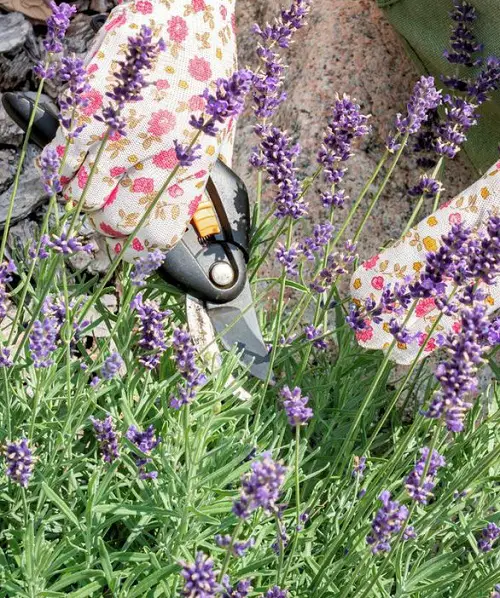
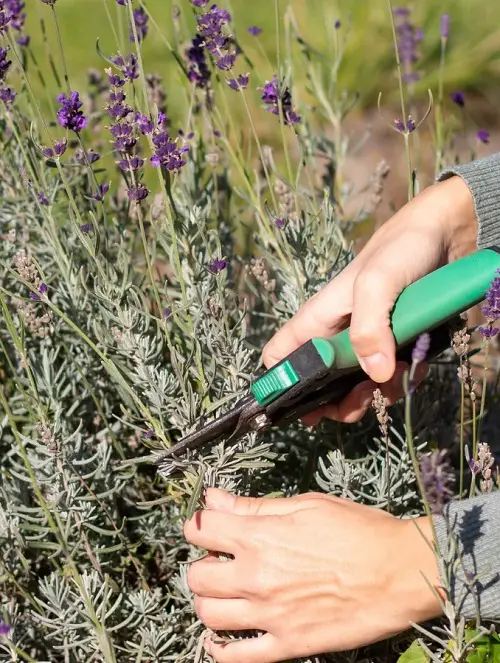
Fertilizer
Fertilize the plant once in 8-10 weeks, using a balanced fertilizer, during their growth years. Once the plant is well established, you don’t have to use any fertilizers.
Tip: Over-fertilizing the plant may hurt it.
Pruning
To prune, simply pinch back the top part along with the first set of leaves just above the leaf node. Don’t over-prune. Usually, regularly harvesting the lavender is enough.
Wondering how to prune herbs the right way? Here’s everything you want to know!
Pests and Diseases
Though lavenders are safe from diseases, you have to be careful with fungal infections that might happen due to cold and wet soil. Flies are easily attracted to lavenders, feeding on the plant’s sap. Using a strong spray of water will be enough to take care of the adult whiteflies. You can also use aluminum foil to repel the flies. Avoid overwatering the plant to prevent root rot.
Harvesting Mature Lavender


It is best to harvest lavender early morning, as the fragrance is at peak and they retain most of the essential oils. Start by cutting the stems, right above the leaves, when the flowers open. Remember, the more you are going to harvest the plant, the more it will grow, up to three times during summers!
If you want to store this herb, once harvested, tie it in bundles and hang them to dry in a warm place free from direct sunlight, upside down. This will help them retain their deep color and oil.


